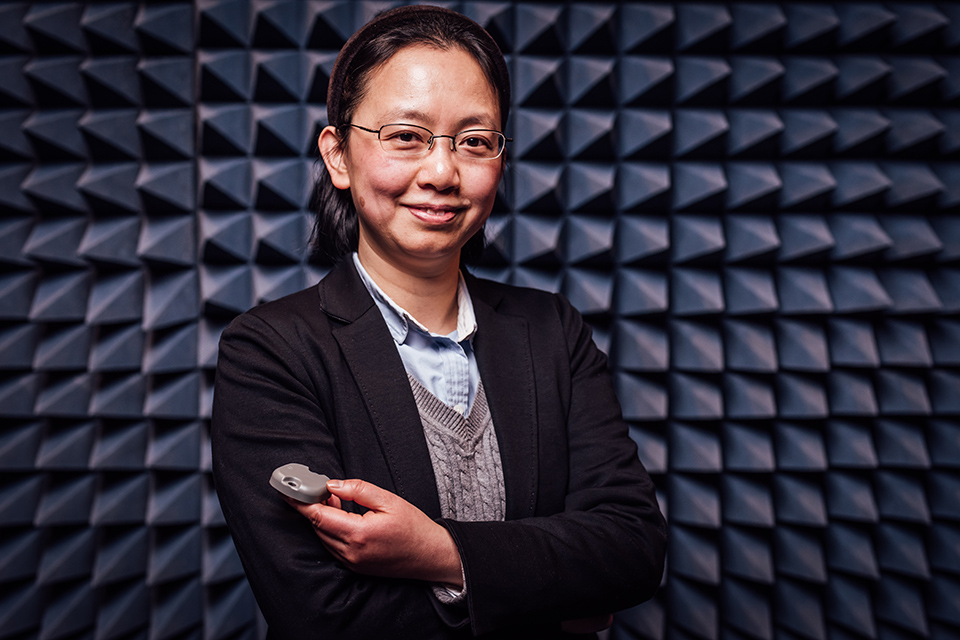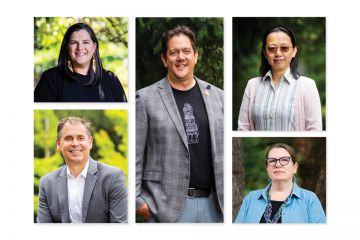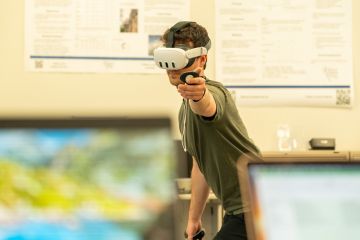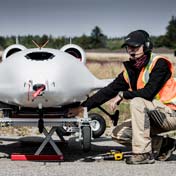Intelligent transportation gets better connected

The future of safe and efficient self-driving vehicles relies on the instant transmission of accurate information to avoid accidents, reduce congestion and air pollution, and improve fuel efficiency. But our current system of wireless networking isn’t adequate.
Lin Cai, a professor of electrical and computer engineering at the University of Victoria and recipient of a 2019 E.W.R. Steacie Memorial Fellowship awarded today in Ottawa, is developing what she calls an “elegant solution” to the complex challenges of creating a safe and seamless wireless network connecting vehicles, roadside infrastructure, pedestrians and the “cloud.”
From wearable devices to home appliances, advances in wireless communications and networking have seen more than 30 years of explosive growth, driving our society and economy. As the Internet-of-Things expands into the transportation sector, Cai is working to make sure we merge smoothly onto the roads of the future.
These massive vehicle-to-everything (V2X) networks will need to be capable of instantly transmitting the speed, location, destination and driving conditions for every vehicle on the road at any given time. She’s designing the technology that will transmit and sort all that information for transportation systems of the future.
“Similar to the way smart phones changed our daily lives since the first iPhone was released in 2007, V2X is the next disruptive invention that will shake up many sectors of the economy and increase the global competitiveness of all industrialized countries,” says Cai, an internationally recognized researcher in wireless communications and networking.
The major challenge is that the current system of wireless networking isn’t reliable over long distances nor for the type of large-scale applications required by V2X networks in cities. Cai’s research group at UVic is designing what she refers to as the “holy grail” of systems: a reliable, scalable, and fully connected “multi-hop” wireless transmission system. In urban areas, a network of vehicles, roads, traffic lights, buildings, and pedestrians and cyclists with smart phones will connect via wireless signals. (In remote areas of Canada, the network will be a vehicle-to-vehicle—V2V—system, operating without the assistance of roadside infrastructure.) Her design will eliminate a cacophony of digital noise, creating instead an organized system that maximizes safety and efficiency.
Recent fatalities involving self-driving vehicles in the US point to the need for a more reliable and intelligent transportation system. A stand-alone autonomous vehicle can’t outperform an experienced driver. “But when more information is acquired from other vehicles and from roadside signs and transmission towers, a reliable multi-hop V2X network can help vehicles be much smarter and make more intelligent decisions. When applied to a large-scale vehicle network, it will be a game-changer for transportation worldwide,” Cai explains.
E.W.R. Steacie Memorial Fellowships are awarded by the Natural Sciences and Engineering Research Council of Canada to six recipients nationally every year from all science and engineering fields. The fellowship honours “outstanding and highly promising university faculty who are earning a strong international reputation for original research.” It includes a research grant of $250,000 over two years. Since its launch in 1965, Cai is the first female recipient of this prestigious award in the field of electrical and computer engineering.
Networking research is a highly competitive field and this funding will allow Cai and her team to give the Canadian V2X-related industry a significant advantage in what she refers to as the next industrial revolution.
Cai’s research is also supported by the Canada Foundation for Innovation, BC Knowledge Development Fund, and Compute Canada, in addition to other funding from industry partners.
A press kit containing an infographic and high-resolution photos are available on Dropbox.
-- 30 --
Photos
Media contacts
Lin Cai (Dept. of Electrical and Computer Engineering) at cai@ece.uvic.ca
Suzanne Ahearne (University Communications + Marketing) at 250-721-6139 or sahearne@uvic.ca
In this story
Keywords: technology, transportation
People: Lin Cai





